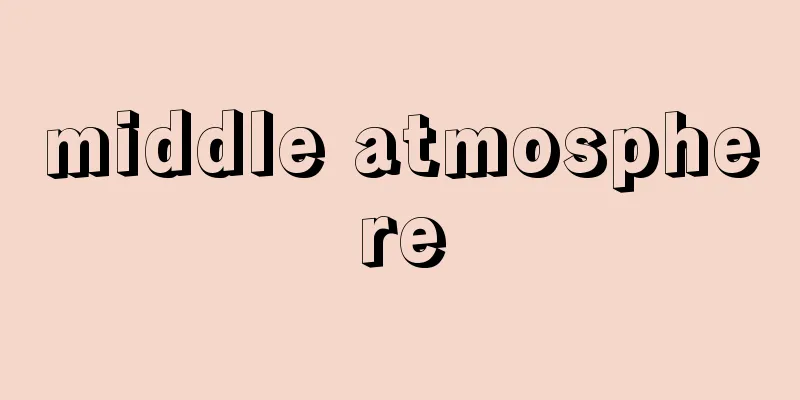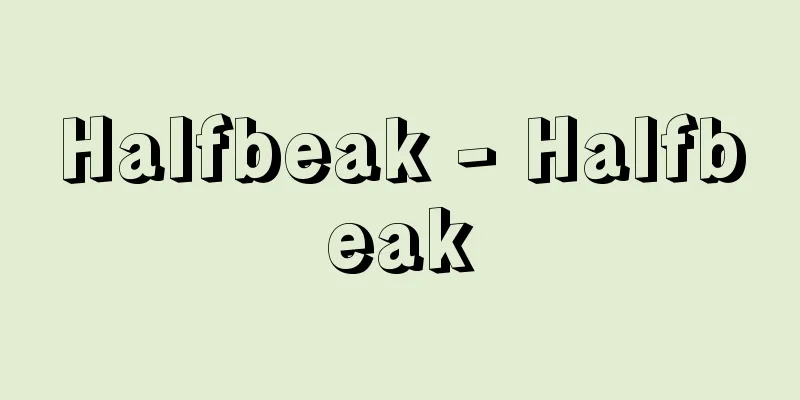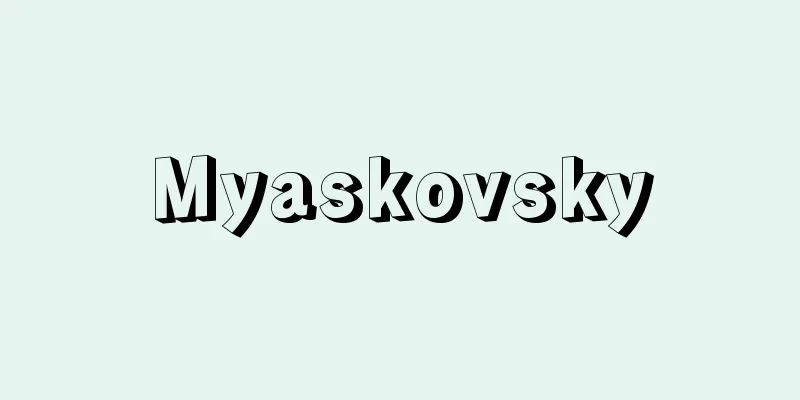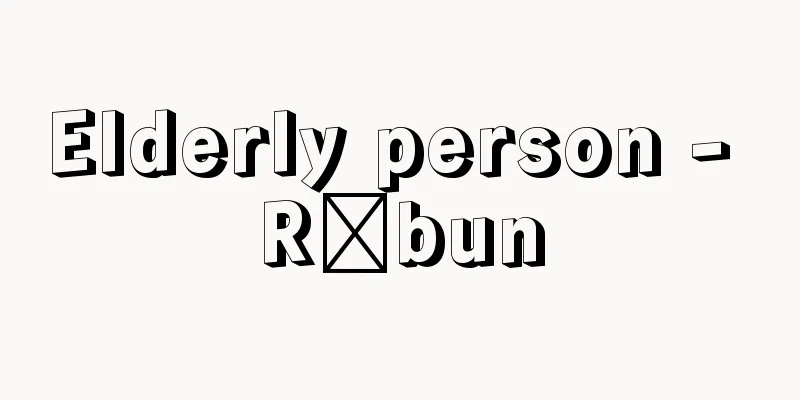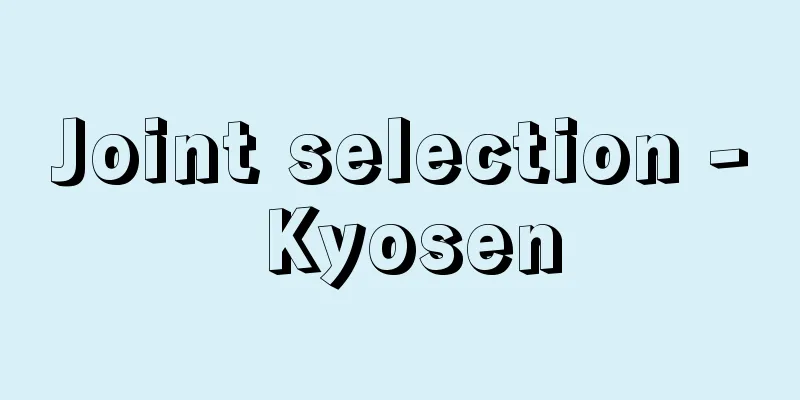Polyvinyl chloride - po-rien-ka-biniru (English spelling) polyvinyl chloride
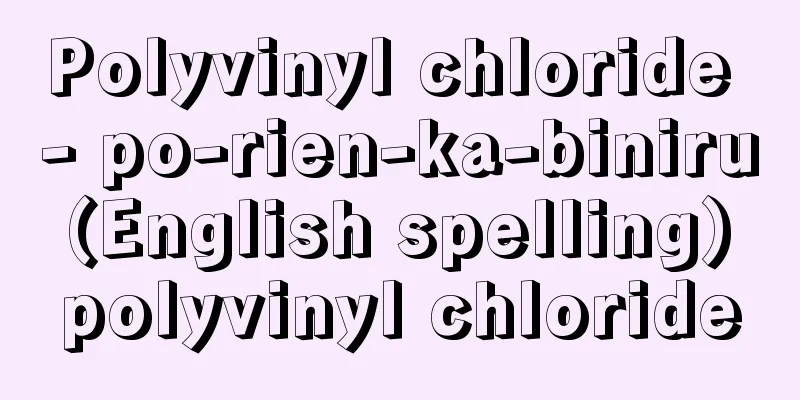
|
It is one of the four major plastics, along with polyethylene, polypropylene, and polystyrene. It is also abbreviated as PVC. It refers to the homopolymer (PVC-S) of chloroethylene (vinyl chloride) CH2 =CHCl, but generally includes copolymers (PVC-M) whose main component is vinyl chloride. Polyvinyl chloride resin is a synthetic resin whose main component is PVC. It has a long history, with the discovery of vinyl chloride and polyvinyl chloride by the Frenchman Henri Victor Regnault (1810-78) in 1835. It is relatively unstable to heat and light and difficult to process, so it took some time to put it to practical use, but in 1927 it was industrialized by the American company Union Carbide. Production in Japan began in 1949 (Showa 24), and reached approximately 2.23 million tons in 2002 (Heisei 14), third only to polyethylene (approximately 3.18 million tons per year) and polypropylene (approximately 2.64 million tons per year). [Hiroshi Kakiuchi] Manufacturing methodVinyl chloride has a boiling point of -13.7°C and is a gas at room temperature. Previously, it was made by adding hydrogen chloride to acetylene, but the newest method is the oxochlorination method. This method is an excellent technology developed in Japan that uses ethylene and chlorine, which are cheap and produced in large quantities, as raw materials, and uses air or oxygen, without producing hydrochloric acid, which is a by-product of previous methods. Vinyl chloride is polymerized by suspension polymerization, and the resulting polyvinyl chloride is a white powder with a size of 50 to 150 micrometers. If it is heated and molded as is, a hard product is obtained, but if a plasticizer such as dioctyl phthalate is added and molded, a soft product is obtained. Molding can be done by calendaring, extrusion, injection molding, etc., and a heat stabilizer is always added, and other additives such as pigments are added to make a compound (composite) before molding. [Hiroshi Kakiuchi] Properties and usesThe density of polyvinyl chloride is 1.35-1.45g/ cm3 . The tensile strength of hard molded products is 600-630 kilograms per square centimeter, and the bending strength is 1000 kilograms per square centimeter, which are similar to those of phenolic resin molded products, but the softening point is low at 65°C to 80°C. It has excellent resistance to acids, alkalis, and water, is transparent, can be colored freely, and is easy to process. Its electrical properties are not inferior to those of phenolic resin. Mechanical properties depend on the molecular weight of the polymer. Although various physical properties of soft polyvinyl chloride are reduced due to the inclusion of plasticizers, it can be freely made into flexible thin films, leather, and sheets, making it versatile. Soft extrusion products include gaskets, hoses, tablecloths, bath curtains, and chemical shoes. On the other hand, hard products are used as hard pipes for water supply and sewage piping, piping for chemical plants, building materials (corrugated sheets, plastic tiles, printed plywood), signs made by vacuum forming sheets, thin food containers (oil and soy sauce containers), toys, telephones, etc. Some of these products are made of polyvinyl chloride alone, but some are copolymerized with a small amount of vinyl acetate. Although it is consumed in large quantities, it generates harmful hydrogen chloride when heated, which causes problems during incineration. For this reason, stabilizers are added to prevent the generation of hydrogen chloride. In addition, dioxin is produced as a by-product when heated and incinerated at temperatures below 800°C, which is also a problem. [Hiroshi Kakiuchi] "Polyvinyl Chloride - Its Chemistry and Industry" edited by the Vinyl Division of the Kinki Chemical Association (1969, Asakura Publishing)" ▽ "Polyvinyl Chloride - Its Fundamentals and Applications" edited by the Vinyl Division of the Kinki Chemical Association (1988, Nikkan Kogyo Shimbun)" ▽ "Making Films" by Matsumoto Kiyoichi (1993, Kyoritsu Shuppan) " ▽ "New Polymer Manufacturing Processes" by Saeki Koji and Omi Shinzo (1994, Industrial Research Association)" ▽ "Polyvinyl Chloride (PVC) and the Environment - The Current State, Issues and Prospects of the PVC Waste Problem" edited and published by Toray Research Center (1994) ▽ "Paradox: Chemical Substances - Challenging Your Common Sense" by John Emsley, translated by Watanabe Tadashi (1996, Maruzen)" [References] | | | | | | | | | | | | |Source: Shogakukan Encyclopedia Nipponica About Encyclopedia Nipponica Information | Legend |
|
ポリエチレン、ポリプロピレン、ポリスチレンとともに、四大プラスチックの一つ。塩ビ、PVCと略称される。クロロエチレン(塩化ビニル)CH2=CHClの単独重合物(PVC-S)を意味するが、一般に塩化ビニルを主成分とした共重合物(PVC-M)をも含める。PVCを主成分とする合成樹脂が塩化ビニル樹脂である。 歴史は古く、1835年フランスのルニョーHenri Victor Regnault(1810―78)が塩化ビニル、ポリ塩化ビニルを発見している。熱および光に対して比較的不安定で加工しにくく実用化に時間がかかったが、1927年に至りアメリカのユニオン・カーバイド社によって工業化された。日本での生産は1949年(昭和24)にスタートし、2002年(平成14)には約223万トンに達しており、これはポリエチレン(年間約318万トン)、ポリプロピレン(年間約264万トン)に次ぐ量である。 [垣内 弘] 製法塩化ビニルは沸点が零下13.7℃、常温では気体である。以前はアセチレンに塩化水素を付加させてつくったが、現在のもっとも新しい方法はオキソ塩素化法である。この方法は、安価でかつ多量に生産されているエチレンと塩素を原料とし、空気または酸素を用いて、それまでの方法で副生する塩酸を出さない、日本で開発された優れた技術である。 塩化ビニルの重合は懸濁重合であり、得られたポリ塩化ビニルは50~150マイクロメートルの白色粉末である。そのまま加熱成形すると硬質製品が得られ、可塑剤としてフタル酸ジオクチルなどを加えて成形すると軟質製品が得られる。成形にはカレンダー、押出し、射出成形などがあり、熱安定剤をかならず加え、その他の顔料などの添加物を加えてコンパウンド(複合物)にして成形加工される。 [垣内 弘] 性質と用途ポリ塩化ビニルの密度は1.35~1.45g/cm3。硬質成形物の引張り強さは1平方センチメートル当り600~630キログラム、曲げ強さは1平方センチメートル当り1000キログラムと、フェノール樹脂成形物と似たような値を示すが、軟化点が65℃ないし80℃という低い値である。耐酸・耐アルカリ・耐水性に優れ、また透明、着色も自由で加工性もよい。電気的性質もフェノール樹脂に比べて悪くない。機械的性質は重合体(ポリマー)の分子量に左右される。軟質のポリ塩化ビニルは可塑剤が入るためにいろいろな物性は低下するが、柔軟な薄いフィルムやレザー、シートが自由にできるので用途が広い。また軟質の押出し製品としてガスケットやホース、テーブルクロス、バスカーテン、ケミカルシューズなどがある。一方、硬質製品は硬質パイプとして上下水道配管、化学工場用配管、建材(波板、プラスタイル、プリント合板)、シートを真空成形してつくる看板、食品用薄物容器(油やしょうゆの容器)、玩具(がんぐ)、電話機などに使用される。これらの製品はポリ塩化ビニル単独のものもあるが、少量の酢酸ビニルと共重合させたものも用いられている。このように多量に消費されるが、加熱によって有害な塩化水素を発生するので焼却処理時に問題がある。そのため塩化水素の発生を抑えるために安定剤が添加されている。また、800℃以下での加熱焼却でダイオキシンを副生するが、これも問題になっている。 [垣内 弘] 『近畿化学工業会ビニル部会編『ポリ塩化ビニル――その化学と工業』(1969・朝倉書店)』▽『近畿化学協会ビニル部会編『ポリ塩化ビニル――その基礎と応用』(1988・日刊工業新聞社)』▽『松本喜代一著『フィルムをつくる』(1993・共立出版)』▽『佐伯康治・尾見信三著『新ポリマー製造プロセス』(1994・工業調査会)』▽『東レリサーチセンター編・刊『ポリ塩化ビニル(PVC)と環境――PVC廃棄物問題の現状と課題・展望』(1994)』▽『ジョン・エムズリー著、渡辺正訳『逆説・化学物質――あなたの常識に挑戦する』(1996・丸善)』 [参照項目] | | | | | | | | | | | | |出典 小学館 日本大百科全書(ニッポニカ)日本大百科全書(ニッポニカ)について 情報 | 凡例 |
<<: Polio - Polio (English spelling)
Recommend
Mannesmann [company] - Mannesmann
A major German integrated steel manufacturer known...
Hotei
One of the Seven Lucky Gods. A Zen monk from Feng...
Colored (red) - Iroiri
...the name of a silk fabric and a type of Noh co...
Kawata peasants - Kawata peasants
...According to the Christian missionary Luis Fro...
Maria Cristina de Borbón
1806‐78 Queen of Spain, Ferdinand VII. Daughter of...
pirate
… [Piracy under international law] Under internat...
Anglian dialect - Anguriahogen
…OE is divided into four dialects according to th...
Al Mina (English spelling)
…333 BC), Syria came under Greek rule. By about 8...
Ibn al-Bayṭāl (English spelling)
…The solitary mystic Ibn al-'Arabi wrote the ...
Quadragesimo Anno - Quadragesimo Anno
The social encyclicals are written in a variety o...
Vedarthasamgraha (English spelling)
…Born in Sriperumbudur, west of Madras, South Ind...
Rabbit fur threading - Unoketooshi
Karahafu From Attach to the center of Hanging fis...
Conquest of Choshu
The Tokugawa shogunate dispatched troops to the C...
Shorinji Kempo
Kempo was founded by So Doshin (1911-80) in 1947 ...
Oni Call - Oni Call
…The width of the ridges ranges from about 10mm t...
